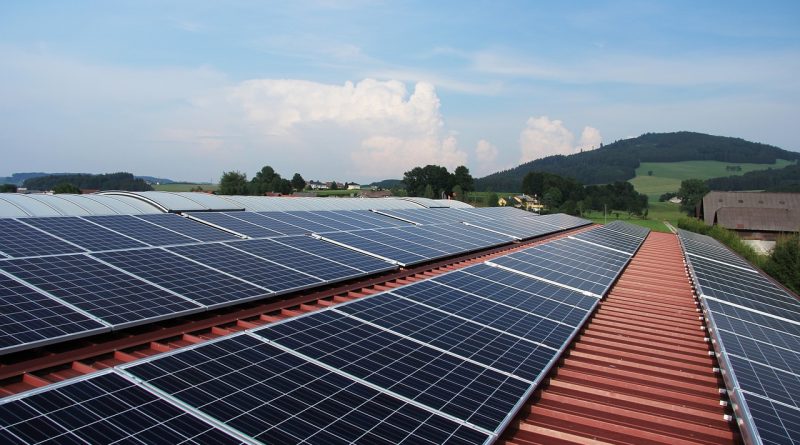What is a setup-on-grid solar power system?
The demand for renewable sources of energy has been on the rise as the world tackles the challenges posed by climate change and depletion of traditional energy sources. Solar power systems have emerged as a viable solution to meet these demands. Among the various types of solar power systems, the setup-on-grid solar power system has gained significant popularity. In this blog, we will explore what a setup-on-grid solar power system is and why it is a cost-effective and efficient way to harness solar energy.
Table of Contents
What is a Setup-On-Grid Solar Power System?
A setup-on-grid solar power system, also known as a grid-tied solar power system, is a solar energy system connected to the electric grid. Unlike other types of solar power systems, such as off-grid or hybrid systems, setup-on-grid systems do not require batteries for storing excess energy. Instead, they are designed to supply electricity directly to the grid when producing more energy than is needed and draw from the grid when the solar panels are not producing enough energy.
The Components of a Setup-On-Grid Solar Power System
To understand how a setup-on-grid solar power system works, it’s essential to comprehend the components that make up the system. The main components include:
1. Solar Panels: These are the primary source of energy in a solar power system. Solar panels, made up of photovoltaic cells, convert sunlight into electricity. The number of solar panels required depends on the energy consumption and available roof space.
2. Inverter: An inverter is a crucial component that converts the direct current (DC) electricity generated by solar panels into alternating current (AC) electricity, which is compatible with the grid and most household appliances.
3. Meter: A bidirectional meter is installed to measure the flow of electricity between the grid and the solar power system. It tracks both the energy exported to the grid and the energy consumed from the grid.
4. Disconnect Switches: Disconnect switches are used to isolate the solar power system from the grid or vice versa. They play a significant role in ensuring the safety of the system during maintenance or emergencies.
5. Grid Connection: A setup-on-grid solar power system requires a connection to the local electric grid for exporting surplus electricity and drawing power when needed. The system is designed in a way that it prioritizes solar power usage before utilizing energy from the grid.
How Does a Setup-On-Grid Solar Power System Work?
A setup-on-grid solar power system operates in conjunction with the electric grid. Here is the step-by-step process of how it works:
1. Solar panels on the rooftop or any appropriate location absorb sunlight and convert it into electricity.
2. The generated DC electricity is sent to an inverter.
3. The inverter converts DC electricity into AC electricity, which can be consumed by electrical appliances or fed back into the grid.
4. If the solar power system produces more electricity than the household requires, the excess energy is sent back to the electric grid through a bidirectional meter.
5. When the solar panels are not producing enough electricity, such as during nighttime or cloudy days, the grid supplies the required electricity to meet the household demand.
6. At the end of each billing period, the bidirectional meter measures the net energy consumption. If the solar power system produces more electricity than is consumed, the surplus is credited towards future electric bills.
The Benefits of a Setup-On-Grid Solar Power System
There are several advantages to opting for a setup-on-grid solar power system:
1. Cost-Effective: These systems eliminate the need for investing in expensive battery storage. Instead, the energy produced during the day is supplied to the grid, allowing homeowners to save on the cost of battery installation, maintenance, and replacement.
2. Simplicity: Setup-on-grid solar power systems are relatively simple and easy to install. They require fewer components compared to off-grid or hybrid systems, making them more affordable and hassle-free.
3. Grid Reliability: With a setup-on-grid solar power system, homeowners can rely on the grid as a backup during periods of low solar energy production. They can draw electricity from the grid when needed without disruptions in their power supply.
4. Net Metering: Many regions offer net metering programs, allowing homeowners to receive credits for excess electricity supplied to the grid. This can significantly reduce or eliminate electricity bills, making setup-on-grid systems financially beneficial.
Conclusion
Ready to embark on your solar journey? SolarClue® is your key to unlocking the potential of on-grid solar power systems. From seamless installations to expert guidance on net metering and government incentives, we ensure a smooth transition to clean and cost-effective energy. Explore the benefits of continuous power, reduced bills, and sustainable living. Whether for your home or business, SolarClue® offers tailored solutions backed by professional installations. Take the first step towards energy independence and a greener future. Contact SolarClue® today and illuminate your space with the power of on-grid solar solutions that make a difference.
Frequently Asked Questions
An on-grid system remains connected to the utility grid, offering continuous power, while off-grid systems operate independently.
Yes, net metering allows users to receive credits for excess energy contributed back to the grid, optimizing savings.
Typically, no. On-grid systems rely on the grid for storage, eliminating the need for additional energy storage systems.
Standard on-grid systems shut down during outages for safety. Hybrid solutions with backup capabilities are recommended for uninterrupted power.
Installation times vary but are generally efficient. SolarClue® ensures prompt and professional installations.
Businesses can reduce operational costs and contribute to sustainability. SolarClue® specializes in commercial on-grid solutions.
Absolutely. SolarClue® guides homeowners to maximize benefits from available government incentives for on-grid installations.
Yes, precise installation is crucial. SolarClue® provides professional installations for optimal system performance.
SolarClue® offers advanced monitoring solutions, allowing users to track and optimize system performance remotely.
Yes, SolarClue® provides tailored solutions for residential and commercial spaces, considering diverse energy requirements.

